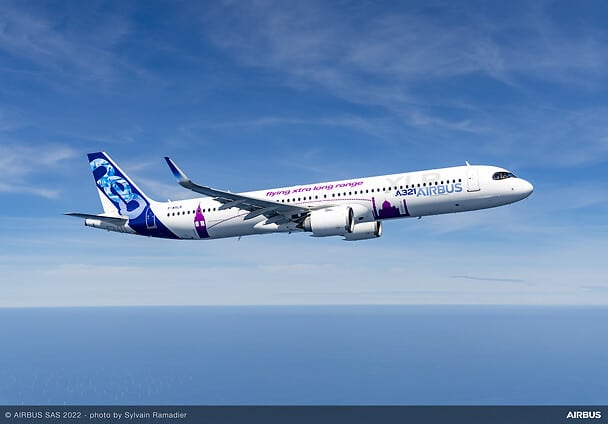Aerospace
Is Airbus planning to modify the A321XLR’s belly fuel storage?

The Airbus A321XLR is one of the most long-range commercial aircraft in the narrow-body class, having recently demonstrated a nonstop 13-hour flight. The Authority, on the other hand, is unsatisfied with certain elements of the aircraft, which are likely to make the aircraft unsafe for some reason.
The first 13-hour test flight of the A321XLR was successfully accomplished.
The FAA previously suggested that essential adjustments be made to the aircraft’s over-the-rear fuel storage during any crash landing since this might result in the risk of catching fire and unsafe over-crash landing.
EASA has now expressed its support for the FAA regulation and requested the required changes for flight safety.
According to the EASA document, which was released on D, “EASA identified the need to prescribe special detailed technical specifications (dubbed Special Conditions) to ensure adequate occupant protection against the risks of external fire and burn-through, fuel vapor ignition, and fuel tank explosion, as well as to ensure crashworthiness of this fuel tank so that no fuel is released in sufficient quantities to start a serious fire in an otherwise survivable crash event.”
Since Boeing expressed concerns to regulators, the design of the integrated tank with a capacity of 19.200 litres has been the focus of attention. If the tank was penetrated by some portion, the close closeness to the landing gear could constitute a hazard during a hard landing. Furthermore, with passengers seated directly on top of the tank, cold fuel could have an impact on cabin comfort. Because the fuel tank and passenger seats are in the same location, there is less time for evacuation during the crash.
American airlines Insight view of A321XLR
The gasoline tank should be located in a specific aircraft fuselage location “that is not likely to collapse or rupture in a survivable crash event beyond the appropriate existing emergency landing conditions,” according to the agency.
The European authorities also advised that Airbus consider adding some extra fuselage design features, such as a bladder and crushable structure, which would “mitigate the effects of impact and scraping on the ground, including contact with obstructions”.
Top 5 selling Narrow Body aircraft(Opens in a new browser tab)
According to EASA, installing compatible materials in this place would jeopardize the ventilation surrounding the fuel tank. It further stated that the tank could be vulnerable to external fire and that without adequate protection, people may not have enough time to flee.

Aerospace
When Ratan Tata was denied entry to the airfield at the Aero India show, he waited

During our visit to Aero India 2019, we had the unexpected opportunity to see Ratan Tata at the event, which was a thrilling moment for us. However, there was a surprising hiccup when the security staff didn’t allow him to enter due to a lack of a security pass.
Despite this, he remained calm and patiently waited for about 20 minutes until a member of the Tata team brought him the required pass, after which he calmly proceeded inside. It was a humbling sight, showcasing his composed demeanor even in such situations.
Ratan Tata ji is not only a renowned industrialist but also a trained pilot, holding a pilot’s license. In 2007, he became the first Indian civilian to fly the F-16 Falcon during the Aero India show in Bangalore—a proud moment for the nation.
His passion for aviation extended beyond flying, as he played a key role in shaping India’s aerospace industry. Under his leadership, Tata ventured into manufacturing and maintaining aerospace components while upholding its legacy of quality. Notably, Tata’s collaboration with Airbus to develop and manufacture the C295 aircraft is a testament to its growing influence in the sector.
-

 Aviation2 months ago
Aviation2 months agoBoeing confirms 797: A New Era for Mid-Size Aircraft
-

 Aviation2 months ago
Aviation2 months agoMicrosoft Flight Simulator Raises $3 Million to Bring Back the An-225 Mriya
-

 Aviation2 months ago
Aviation2 months agoLockheed and Tata Team Up to Build C-130J MRO Facility in India
-

 Airlines2 months ago
Airlines2 months agoQantas Engineers Stage Walkout Over Cost of Living Concerns
-

 Airlines2 months ago
Airlines2 months agoQatar Citizens Can Travel to the United States Without a Visa
-

 Aviation2 months ago
Aviation2 months agoBoeing Offers 25% Pay Increase & Promise to Build Next Plane in Seattle
-

 Aviation2 months ago
Aviation2 months agoQatar Airways bans these new Electronic Devices on plane
-

 Airlines2 months ago
Airlines2 months agoEmirates Ends 28-Year Singapore-Melbourne Fifth Freedom Route








